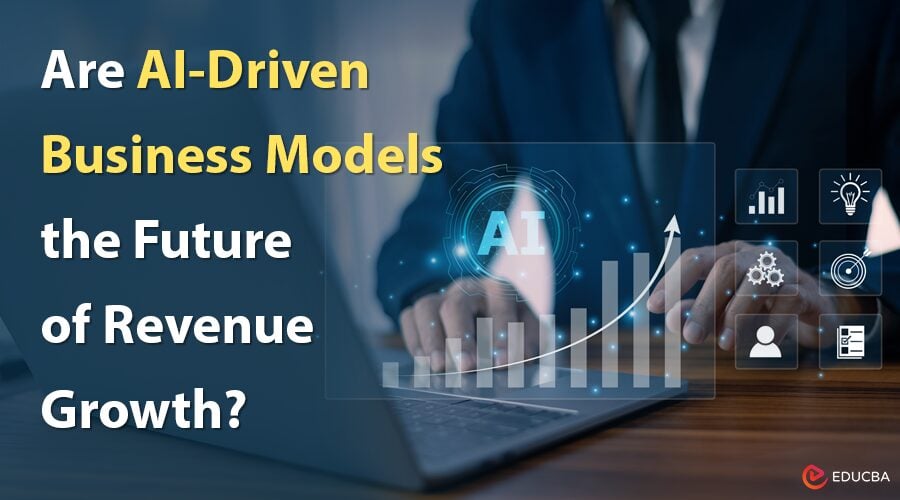
AI-Driven Business Models: Overview
What happens when artificial intelligence (AI) is not just a support tool for your business but becomes the business model itself? This is no longer hypothetical. Companies are reshaping how they generate revenue by integrating AI into the core of their strategy. AI is becoming the key growth driver, from real-time pricing changes to hyper-personalized recommendations. This article will examine how AI-driven business models transform monetization strategies, enhance customer experiences, and alter established business practices.
From Product to Platform: Reinventing Value with AI
The old playbook was straightforward: sell a product, repeat. But AI fundamentally reshapes the cycle, evolving it from a static transaction into a continuous, adaptive value exchange. Businesses are shifting from one-time transactions to ongoing engagement. Think of the leap from buying music CDs to Spotify’s streaming service, where AI curates playlists tailored to your taste.
AI-driven platforms collect real-time behavioral data, enabling businesses to adjust their offerings dynamically, as seen in leading AI-powered business platforms that rely on behavioral insights to evolve experiences. This shift toward subscription-based AI services reflects a broader move away from static goods. Fitness apps now offer adaptive coaching, and finance tools personalize investment strategies based on individual patterns.
Building Stickiness Through Dynamic Ecosystems
By anticipating user needs through AI, companies construct interconnected environments that respond and evolve with each interaction. These systems evolve through feedback loops: as user behavior trains the AI, the AI in turn improves the experience. This mirrors the real-world machine learning pipeline insights that fuel continuous product refinement. That loop creates compounding returns: the more data it absorbs, the sharper and more relevant the outputs become.
Real-Time Monetization: Pricing, Prediction, and Precision
Fixed pricing is becoming obsolete. AI-driven engines enable pricing that adapts to real-time conditions. Whether it is a ride-share app adjusting for peak demand or an e-commerce store adapting to browsing history, AI supports granular, responsive strategies. This reflects how companies utilize AI for dynamic pricing strategies, aligning prices with customer expectations.
Retailers use predictive analytics to forecast demand. AI analyzes weather, events, and social chatter signals to inform inventory and pricing decisions. These adjustments support deeper engagement patterns. One telling data point is that 58% of businesses plan to increase their AI investments. These moves reflect a long-term shift in strategy, with companies incorporating AI adoption into their plans for competitiveness and adaptability.
Risk-Based Personalization in Finance and Insurance
AI also redefines how financial and insurance services evaluate users. AI analyzes large, complex datasets and generates personalized risk profiles and real-time pricing. This evolution mirrors how Wall Street banks use AI to rewire finance and build faster, more precise models for credit scoring and segmentation.
Using AI-Driven Business Models to Boost Customer Retention
Generic content does not work anymore. AI helps businesses deliver hyper-personalized experiences that feel tailored to each user:
- Websites adapt based on your past behavior.
- Recommendations match your interests.
- Subscription services curate boxes just for you.
This makes users feel understood—and more loyal to the brand. The more users feel understood, the less likely they are to leave. AI makes this scalable, powering everything from responsive onboarding flows to curated subscription boxes.
Giving Brands a Personality Through AI
AI does not just automate—it adds personality. Chatbots speak in a brand’s tone. Emails feel human, not robotic. When done right, these interactions strengthen the brand’s identity and make customers feel connected.
AI as the Infrastructure of Innovation
Rather than a tool added late in the game, AI now forms the structural framework guiding how agile businesses operate. Logistics firms use it to reroute based on live traffic and weather, and retailers design floor plans through real-time camera analysis.
These systems are not superficial; they ground operational decisions in AI-driven customer segmentation benefits at a foundational level. Startups leverage real-world machine learning applications to model go-to-market strategies, simulate supply chains, and adapt faster to economic shifts. AI has transitioned from a backstage assistant to a principal strategist, shaping how companies envision and execute growth.
Strategic Flexibility Through Machine Learning Feedback Loops
Machine learning thrives on iteration. Each interaction trains the model, making it smarter and more responsive. Companies using these systems pivot faster, make sharper decisions, and outpace competitors stuck in slow planning cycles.
The New Monetization Models: Speed and Relevance
Old models chased volume and margin. AI enables speed and relevance. The real winners monetize attention as it happens and shift offers in real-time based on micro-audience behavior.
That is why platforms that embed AI into their core are reshaping value creation through strategies for dynamic e-commerce pricing that reflect market demands and consumer sentiment.
AI Is the Foundation, Not Just a Feature
Rather than a supplementary tool, AI is now the framework guiding business strategies. Want to test different marketing approaches? Let AI run thousands of ad variants. Need better customer retention? Let AI track and respond to user behavior in real-time. AI is not just a tool; it is the core driver of modern business decisions.
Reinvention as the Business Imperative
The businesses that hold on to old methods will be left behind. AI-driven business models outperform traditional strategies, particularly in terms of relevance, retention, and reach. In a world driven by algorithms, staying static is the real risk.
Companies that embrace experimentation, iteration, and AI-driven innovation position themselves for success. AI is not just enabling reinvention; it is becoming the default model for how businesses evolve and thrive.
Final Thoughts
AI-driven business models are changing how companies operate, generate revenue, and engage with customers. Whether through hyper-personalization, real-time pricing adjustments, or evolving business strategies, AI is at the heart of a new era of business innovation. Companies that neglect to incorporate AI into their business models risk falling behind in an increasingly competitive marketplace.
Recommended Articles
We hope this guide on AI-driven business models provides you with valuable insights on transforming your business for the future. Check out these recommended articles for more strategies and innovations to enhance your business growth through artificial intelligence.

